Putting the joy back into the retail experience
Post-lockdown audiences are looking for a feel-good boost - and brands who are able to tap into this idea of joyful reconnection will be a popular choice.

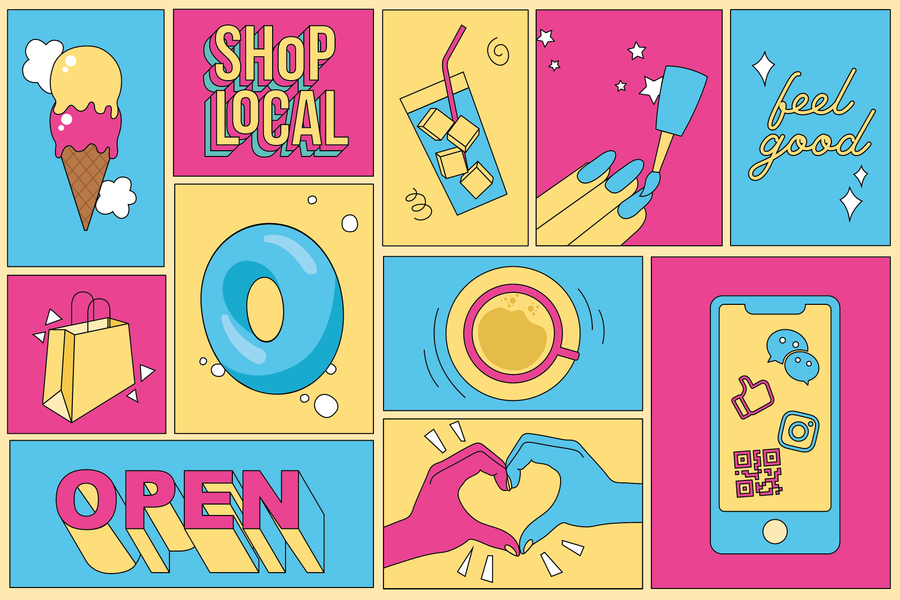
Post-lockdown audiences are looking for a feel-good boost - and brands who are able to tap into this idea of joyful reconnection will be a popular choice.


In today’s world, safety has quickly become a key driver of consumer behaviour. But with a heightened focus on hygiene and social distancing measures, the post-COVID shopping experience runs the risk of alienating customers by failing to connect on an emotional level. How can we put the magic back into the retail experience in order to delight and excite audiences once again?
Although it’s easy to blame the pandemic, physical retail has been going through a sustained shift for some time, slowly moving away from its ‘leisure activity’ status of yesteryear. A key driver was of course the rise of the internet - everything became shoppable online, and retail was put under pressure to compete with this new super-fast digital process. What we ended up with was a high street full of slicker, more convenient stores - but many lost the fun in the process.
At D&P, we’re on a constant mission to inject some joy back into retail in order to serve and support audiences with a brand experience they can’t wait to be a part of - and it’s now needed more than ever. So how can we bring it back?
Shopping online has its benefits, but it’s also a bit like watching fireworks on TV - it’s just not quite the same as being there in real life. Instead of seeking to compete with the internet, brands should be creating something aspirational and magical - people still desire to be in a different and inspiring environment. Great architecture, design and atmosphere are not only positive reflections of a brand, they also contribute to an experience that customers simply can’t get in their own homes.
Bursting with elements of retail theatre, our store for Missguided is a great example of how brands should have fun and create an immersive playground for customers to get lost in. The Museum of Ice Cream is another stand-out retail experience creating something special for customers to marvel at. Yes, the delicious pops of bubblegum-pink branding and numerous Instagrammable moments help, but it goes deeper than that - the brand actually encourages its visitors to build connections and interact with each other rather than just stay glued to their phones. Saks’ recent innovations have also taken into account the social aspect of shopping, with psychedelic escalators acting as a unifying centrepiece of the store and creating a wow-moment for fun-seeking shoppers.
Brands should get creative to inspire, delight and excite in a bid to bring audiences together and do what the internet can’t.
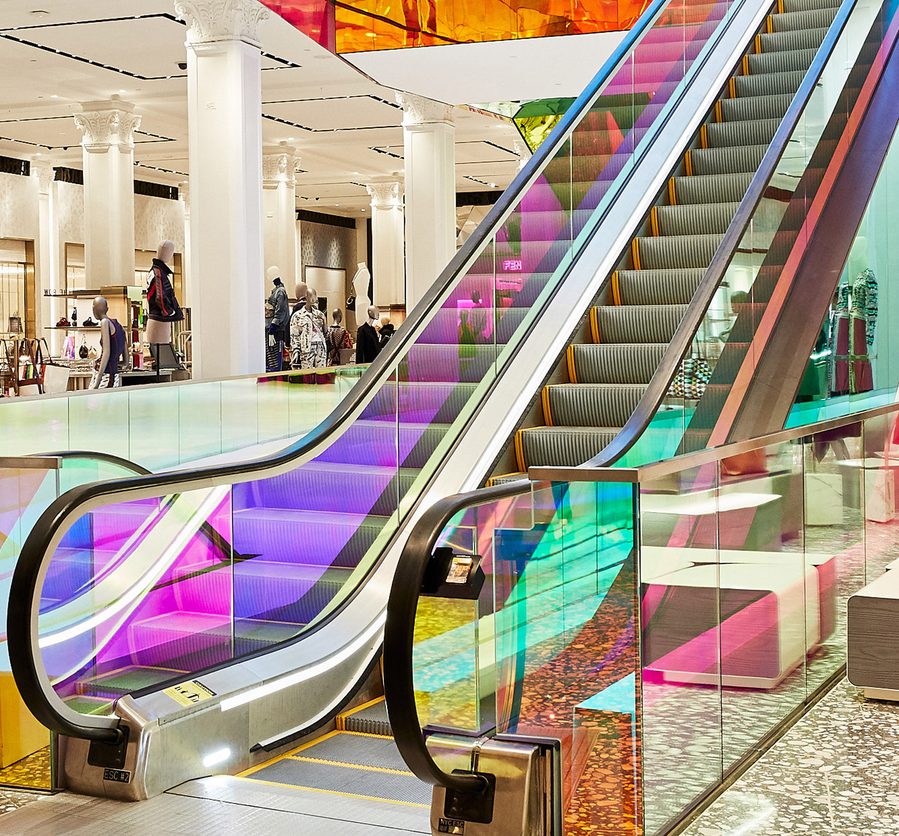
In today’s fast-paced world however, there is understandably always a place for convenience. But streamlining the customer journey doesn’t have to involve stripping out all the enjoyment - brands should learn from the benefits of online but be special and experiential in their approach.
One of the best convenience experiences we’ve come across recently is the Box collection point in Helsinki, a dedicated space set up by the Finnish postal service Posti for customers to pick up and return online orders. A far cry from the grey homogenisation of the standard click and collect point, the appealing space is even kitted out with fitting rooms and packaging materials for the ultimate returns experience. Above all else, it looks amazing, feels fun and puts the customer experience at the heart.
Our concept for footwear brand Eobuwie brought on and offline retail together in the brand's first brick-and-mortar store. Building on its dominance in e-commerce, the store blends digital and physical on the high street, encouraging both fast and slow-paced customer journeys to make shoe shopping easier and more exciting than ever before.

The pandemic has exacerbated shifts in consumer behaviour, casting a shadow of trepidation over shopping and changing the way communities interact with brands and each other. But these challenges can be turned into opportunities for brands to think creatively and build something even better than before.
Current restrictions, such as social distancing queuing, don’t have to be boring. Brands can reimagine the waiting experience - for instance a queue that makes you forget you’re queuing by introducing an element of entertainment or immersion as Disney has famously achieved at their parks; or a queue that looks after customers in some way by offering refreshments, advice and added value, as Made.com have successfully done at their Paris store.
In the hospitality sector, immersive bar Mr Fogg's has embraced the need for staff to wear PPE by integrating it into part of their experience, with beekeeper barmen now serving guests at their House of Botanicals bar.
The common perception might be that COVID has presented the retail industry with nothing but challenges, but that doesn’t have to be the case. Brands should seek out the creative pivots that they can make - both temporarily and longer term - in order to bring the joy back to the retail experience.
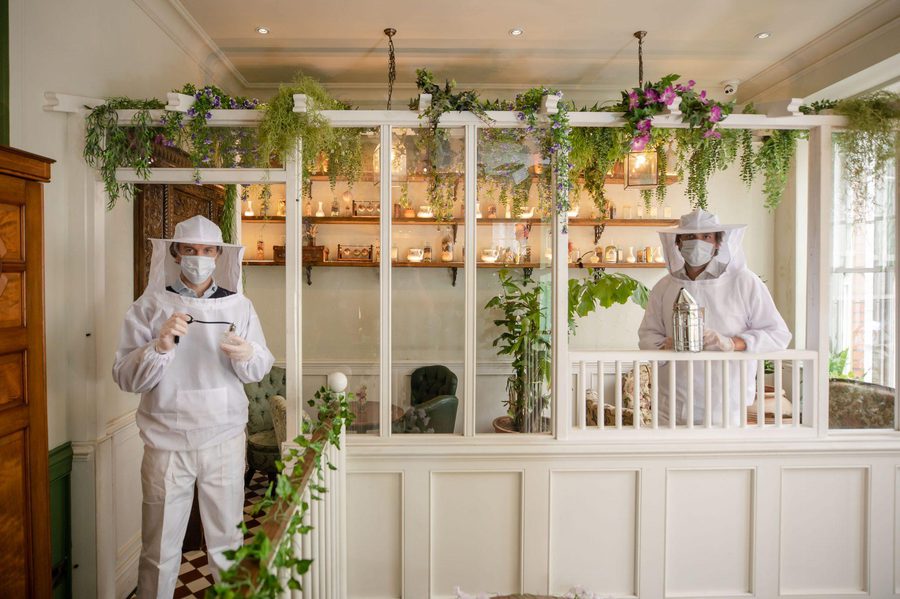
With a heightened focus on hygiene and social distancing measures, some retail experiences run the risk of feeling too clinical and rigid. Of course, post-lockdown audiences are interested in safety - but they are also looking for a feel-good boost and a reminder that we are all getting through this together.
Having a friendly face to discuss requirements with will arguably be more important than ever, and experiences driven by some form of human connection - perhaps on an emotional, rather than a physical level - will be key. With fewer shoppers in-store due to distancing restrictions, brands should place a higher emphasis on service, with more ‘by appointment’, personal and assisted shopping (both for customers in-store and via new online platforms, such as Hero), shaking up the recognised role of the store assistant.
Your customers want to feel looked after - a personalised and humanised experience will help put a smile back on their faces.
Despite the importance of human connection, today's landscape does mean that experiences have to be mainly hands-off for now. But no-touch doesn't always mean no-fun - brands can experiment with digital tools to create excitement across their channels.
Burberry has revolutionised the 2020 shopping experience by opening a ‘social retail’ store in China, using interactive QR codes and a special WeChat platform to allow customers to interact with the brand in person and on social media. The new concept blends the best of digital and physical and features exclusive content for visitors to unlock. Each shopper gets their own WeChat avatar that evolves the more they explore, delivering a bespoke experience that they can share online with others. This element of gamification is a sure-fire way of injecting the fun back into the shopping experience.
Beauty brands could overcoming pandemic barriers by introducing AR mirrors whilst in-store makeovers are off the cards. The technology scans the user's face and projects a digital overlay, allowing customers to swap their lip colour or blusher shade without physically coming into contact with any product or person - a safe but enjoyable way to try out a new look.
By using digital tools to enhance and not overpower, brands can make the retail experience more rewarding for their audiences.
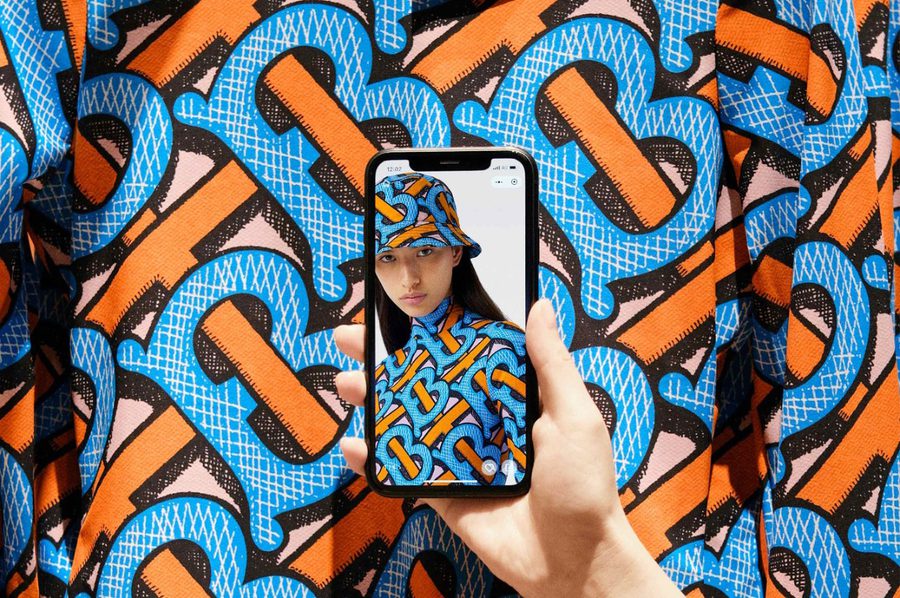
Even before lockdown, we were seeing a rise in the number of brands thinking and acting more locally. Our work with Primark was centred around giving the global brand a localised feel with different designs in each city to help increase local brand engagement. Now more than ever, customers have formed closer connections with nearby brands and experiences - we’ve seen the polo effect of lower footfall in city centres and more shoppers in suburbs and local neighbourhoods. A focus on caring, sharing communities has helped ease the burden during a challenging time - brands should rethink their format strategies in order to be where their customers need them to be and help spread more positivity in this way.
Brands can help to plug the gaps missing in customers’ lives and become a key part of the community. Canadian brand Grocery Neighbour has recently launched a mobile supermarket - an open air, portable corner shop stocked with essential food and drink staples - to help calm the minds of cautious customers and allow them to enjoy their shopping experience once again.
Sassy wine brand Babe answered the prayers of straggly-nailed New Yorkers with a mobile manicure van providing free cuticle care to local neighbourhoods whilst salons remain shut. The portable format is great, the branding is fun and punchy - and who doesn’t love a free manicure with their glass of rose? Other brands should take note and think about how they can mobilise their experience offer in order to spread some joy throughout local communities.
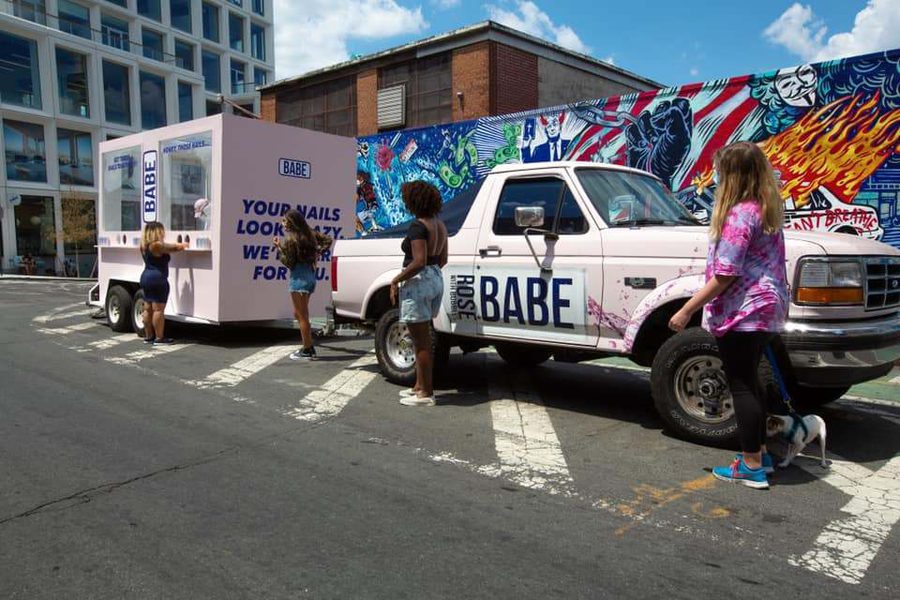
We may find ourselves in a challenging new era. But there are many ways that brands can create convenient, magical and engaging experiences in order to delight, serve and support customers.
If you'd like to discuss how you can put the joy back into your brand experience, please get in touch.
Illustration - Sarah Butler
This article was originally published in Inside Retail Australia, Asia and NZ
